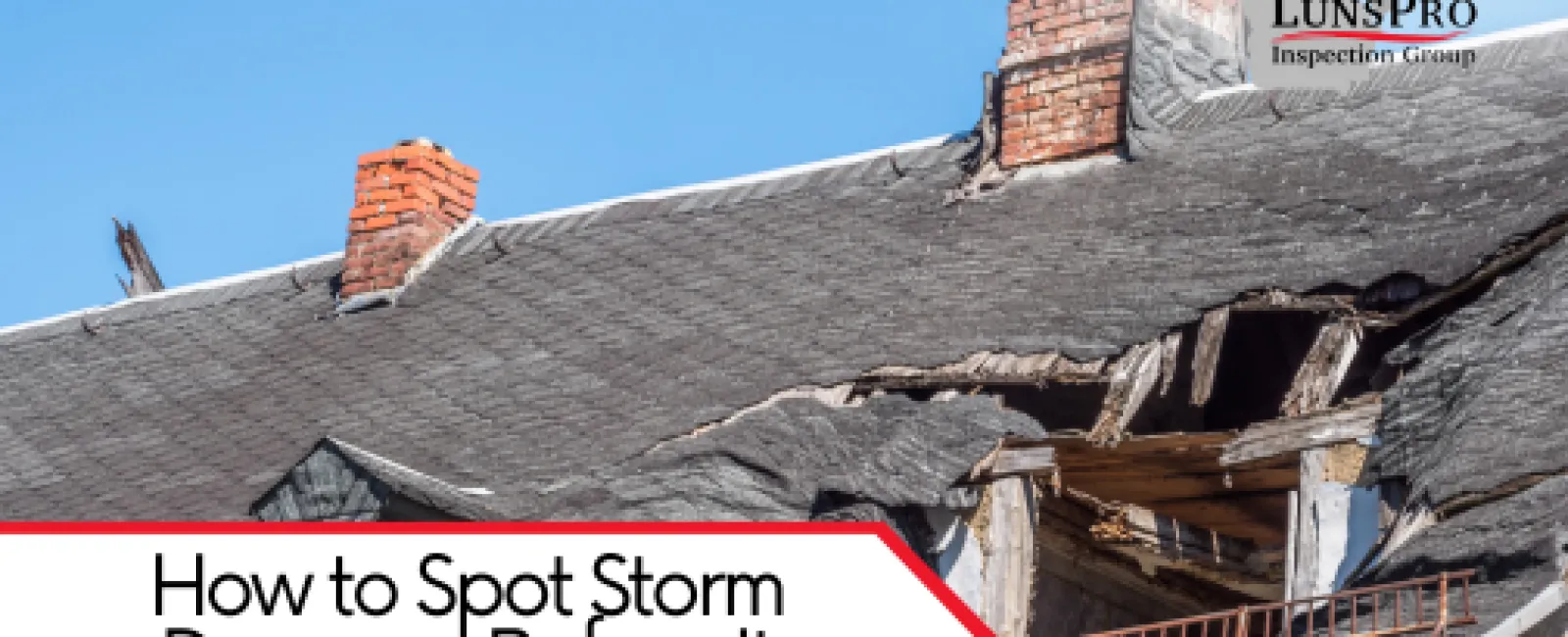Storms in the Carolinas are a reality that homeowners cannot ignore. From severe summer thunderstorms and hurricanes to occasional winter ice storms, properties in Charlotte, Greensboro, and Raleigh are exposed to a variety of weather conditions throughout the year. While many homeowners check their property immediately after a major storm, smaller or hidden damages often go unnoticed until they become costly repairs. Knowing how to properly spot storm damage before it turns into a major issue can save significant time, money, and stress.
For residents across the Triad and Triangle Areas, proactive attention to storm damage is especially important. Carolina home inspections performed by trusted professionals like LunsPro Inspection Group provide an expert eye to catch damage that may not be visible to the untrained homeowner. This is not just about preventing small issues from becoming bigger—it's also about protecting the long-term stability of your home, including critical elements such as roofing, siding, and even foundation integrity.
Why Storm Damage Can Be Easy to Overlook
Storm damage doesn't always appear as a collapsed roof or shattered window. In fact, much of the damage that causes expensive repairs begins as something subtle. For example, a loose shingle might not cause an immediate leak but can allow water seepage over time, leading to mold, rotting wood, and even structural issues. Similarly, hairline cracks in a foundation caused by excessive water pooling may not be visible until months later when the home begins showing signs of settling.
In areas like Charlotte and Raleigh, where sudden heavy rains and strong winds are common, these small vulnerabilities can escalate quickly. That's why having a professional inspection following a major storm—or as part of routine Carolina home inspections—is crucial to catching issues before they spiral into costly repairs.
Key Areas to Inspect After a Storm
1. Roofing and Gutters
Your roof is the first line of defense against the elements, and it takes the brunt of storm damage. Missing or curled shingles, dented flashing, and clogged gutters can all lead to water infiltration. In Greensboro and across the Triad, clogged gutters are a frequent issue after heavy storms when debris like leaves and branches accumulate. Homeowners should look for granules from shingles in the gutters, which signal advanced wear.
2. Windows and Doors
Strong winds and flying debris can compromise window seals and door frames. Even if glass isn't visibly broken, seals can weaken, leading to drafts and water leaks. Inspecting caulking and looking for moisture between window panes is a simple but effective step.
3. Siding and Exterior Walls
Storms often cause siding panels to loosen or crack. In Raleigh Residential and Commercial Inspections, exterior damage is one of the most frequently cited post-storm issues. Look for warping, water stains, or signs of mold growth.
4. Foundation and Drainage Systems
Storm water can pool around a home's base, increasing the risk of foundation cracks. For Carolina homeowners concerned about structural stability, foundation checks should always follow major weather events. Poor drainage systems, such as clogged downspouts, can worsen the problem by directing water toward the home instead of away from it.
5. Attics and Crawl Spaces
Hidden spaces like attics and crawl spaces often reveal storm damage before other parts of the house. Water stains, mold, and musty odors are warning signs. In the humid Triad and Triangle Areas, moisture buildup is a particularly common problem after storms.
The Risks of Ignoring Early Storm Damage
Failing to identify storm damage quickly can have serious consequences. A seemingly minor roof leak can lead to significant mold growth, which poses both health risks and costly remediation. Structural issues, especially foundation problems, are another long-term risk. Once cracks expand due to repeated water exposure, repair costs escalate dramatically.
Commercial property owners also face risks when storm damage goes unchecked. Delays in identifying and addressing issues can lead to tenant disputes, higher maintenance costs, and even liability concerns. For businesses in Greensboro and Charlotte, ensuring storm damage inspections are part of routine property management helps preserve property value and tenant trust.
Why Professional Inspections Are Essential
While homeowners can and should perform a visual check after storms, professional evaluations are necessary to catch less obvious damage. LunsPro Inspection Group specializes in thorough residential and commercial inspections across Charlotte, Greensboro, and Raleigh. Their team uses advanced tools—such as drones for roof assessments and moisture meters for detecting hidden water damage—that go far beyond what the average homeowner can accomplish.
In the Triad and Triangle Areas, where storm patterns vary, a professional inspection not only identifies current damage but also helps anticipate future risks. For example, repeated exposure to wind-driven rain may weaken siding in ways that only a trained inspector would recognize.
Preventative Steps Homeowners Can Take
-
Schedule Regular Carolina Home Inspections
Routine inspections from LunsPro Inspection Group provide peace of mind, ensuring that small issues are identified before they become major problems. -
Maintain Gutters and Downspouts
Clearing gutters regularly ensures water is directed away from your foundation. Extensions can also be added to downspouts to improve drainage. -
Trim Trees and Remove Debris
Overhanging branches are a leading cause of roof and siding damage during storms. Keeping trees trimmed reduces risk. -
Seal Windows and Doors
Proactive sealing of window and door frames can prevent storm-driven rain from entering your home. -
Check Grading Around the Home
Ensuring the ground slopes away from your foundation minimizes water pooling and reduces foundation stress.
Storm Damage in Commercial Properties
For commercial property owners across the Triad and Triangle Areas, storm preparedness and inspections are just as important as they are for residential properties. Tenants rely on well-maintained buildings, and undiscovered storm damage can lead to lease disputes or even business interruptions. Raleigh Residential and Commercial Inspections often uncover roof membrane damage, compromised HVAC systems, and clogged drainage systems—all of which are critical to keeping businesses operational after severe weather.
When to Call a Professional
Homeowners should contact LunsPro Inspection Group immediately if they notice:
-
Leaks or water stains on ceilings and walls
-
Warped or missing siding
-
Cracks in foundation walls
-
Persistent mold or musty odors in crawl spaces
-
Unexplained increases in energy bills, which may indicate compromised insulation from water intrusion
The sooner an inspection is scheduled, the greater the chance of mitigating damage before it escalates into a costly repair.
Storm damage is one of the most common threats to homes and commercial properties in the Carolinas, but it doesn't always reveal itself immediately. From subtle foundation cracks to small roof leaks, these issues can grow silently until they require major repairs. For homeowners in Charlotte, Greensboro, and Raleigh, as well as those throughout the Triad and Triangle Areas, being proactive is key.
Relying on LunsPro Inspection Group for professional Carolina home inspections ensures that no damage goes unnoticed. Their expertise not only identifies current issues but also helps prevent future problems, preserving both the safety and value of your property.
Whether you're a homeowner concerned about foundation issues or a commercial property owner looking to protect your investment, regular inspections and prompt responses to storm damage are essential. By staying vigilant and trusting the professionals, you can safeguard your property from storms and enjoy peace of mind knowing your home or business is protected.

